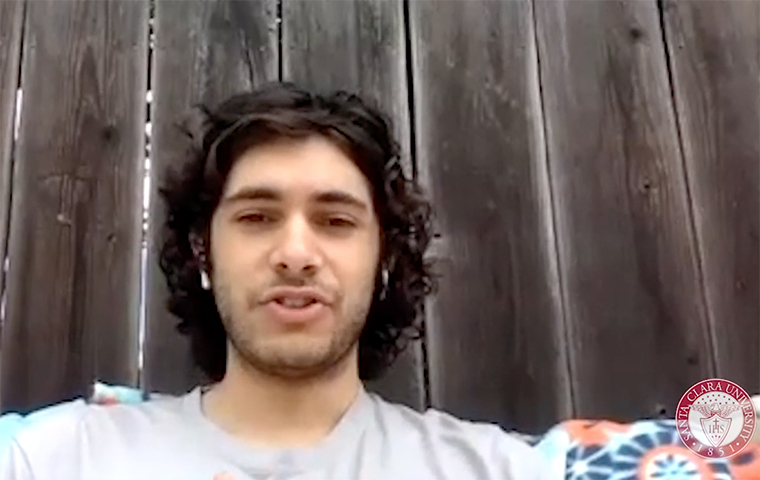
By Students, For Students
The student-run LEVL UP program uses student insights from remote learning so other Bronco undergrads get the most out of their online education this quarter.
Jacqui Ibarra-Garcia ’21 was skeptical when she first heard about Santa Clara’s LEVL Up (Learning and Engaging in Virtual Learning) program. After sitting for hours in remote learning classes during the spring quarter, the last thing Ibarra-Garcia wanted to do was spend more time in front of a computer screen.
But when she watched a sample of the student-produced videos herself, the marketing major realized this remote learning tutorial program was different.
“The videos were personal,” Ibarra-Garcia says. “That’s what stuck out the most to me. Students were being genuine in front of the camera and saying where they had weaknesses. That’s where it was really valuable, especially for a first-year who thinks you're the only one who doesn't have their life together.”
She was so impressed with the videos that she decided to join the LEVL Up team as a student promoter to help publicize the program, which has already reached thousands at SCU.
The 24 SCU students who designed LEVL Up took a “by students, for students” approach, valuing authenticity in their tone and content. The program has nine levels, each tackling its own topic from helping students with their mental health to goal-setting during remote learning.
Within each level are four stages: self-assessment, skill acquisition, reflection with a commitment to action, and deeper learning. When students complete this work, they receive a badge for the level.
It’s in the skill acquisition section where things got personal. Students have access to more than 80 “Student Voice” videos with current students sharing their experiences and lessons learned from a challenging spring 2020 quarter online.
Students worried less about polish in the videos and instead leaned into the reality of their situation.
“One goal we had was to be honest and vulnerable,” Ryan Nazari ’21 says. “I filmed my video outside and my internet was shaky, so the audio was a bit off. I paused to think about what I was going to say, I stuttered a bit, but that was OK. Obviously I wanted to be clear, but we wanted to show students solidarity and let them know we’re struggling and that it’s OK to struggle.”
That authenticity extended to the lessons themselves. Nobody knows the challenges students face with remote learning better than students, and the modules were nuanced and specific. Whether it was struggling with motivation or having your parents interrupt you during a synchronous class, the LEVL Up team had been through it all and built modules to have actionable tips.
For Alexa Williams ’21, time management was an issue in remote learning. Some students use traditional classes as a de facto form of time management and structure study time around their classes. But without synchronous classes, the structure of your study schedule can dissolve.
“So we included a lesson on ‘time blocking’ where students block out every hour of your day and what you should be doing,” Williams says. “That’s foundational for time management and foundational for remote learning because if you’re not personally feeling motivated to do the work, you’re not held accountable the same way if you’re in in person classes.”
The LEVL Up project was started by Kevin Kelly, an educational consultant, co-author of an upcoming book, Advancing Online Teaching: Creating Equity-Based Digital Learning Environments (Stylus, Fall 2020), and lecturer at San Francisco State University. Kelly set the framework for the project but says the student workers built the content and marketed it themselves.
Melanie Sam ’22, an architect for LEVL Up, says the project was important to the students who wanted to offer the help they received from older students at Santa Clara. Even though students aren’t on campus this quarter, peer-to-peer engagement and mentorship is important.
“We wanted to give back to the Santa Clara community and make it more of a home now, especially since we’re farther apart,” Sam says. “So being able to showcase our stories and being able to serve as leaders of the University and serve as a resource to students is something I’m really proud of.”
Ryan Nazari ’21